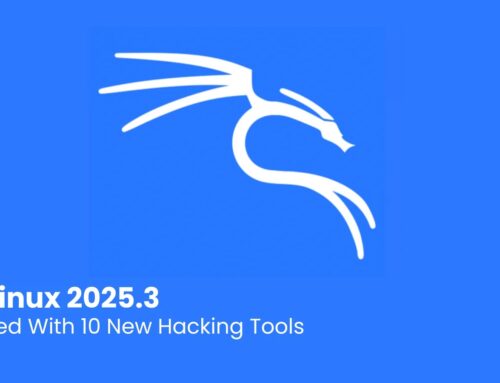
Tata-Owned Jaguar Land Rover Delays Factory Reopening Following Major Cyber Attack
Cyber Attack Halts JLR Production: A Deeper Look into Supply Chain Vulnerabilities
The automotive industry, a complex web of global supply chains and advanced manufacturing, faces an increasingly insidious threat: sophisticated cyber attacks. The recent incident impacting Tata-owned Jaguar Land Rover (JLR) serves as a stark reminder of this reality. JLR, the United Kingdom’s largest automotive manufacturer, has once again delayed the resumption of production at its factories, pushing the current pause until an astounding October 1, 2025. This significant setback, following a major cyber attack earlier this month, underscores the profound and long-lasting ramifications such incidents can have on even the most established enterprises.
The JLR Security Incident: A Timeline of Disruption
While the specific details of the cyber attack remain largely under wraps, the impact is undeniably severe. Initially, production was halted, and now, we observe a substantial extension of this downtime. This delay suggests that the attackers likely compromised critical operational technology (OT) systems, or perhaps even deeply embedded supply chain management platforms. Such disruptions can cascade rapidly, affecting everything from part procurement to assembly lines and ultimately, vehicle delivery.
This incident is not an isolated event. Modern vehicle manufacturing relies heavily on interconnected digital systems for design, automation, inventory, and logistics. A breach in any one of these areas can bring operations to a grinding halt. The extended production pause indicates that JLR is grappling with either significant data recovery challenges, extensive system re-architecture, or a thorough forensic investigation to ensure complete eradication of the threat actor and hardening of their defenses.
Understanding the Broader Implications for Automotive Cybersecurity
The JLR situation highlights several critical cybersecurity concerns pertinent to the automotive sector:
- Supply Chain Interdependencies: Modern automotive manufacturing involves hundreds, if not thousands, of suppliers. A cyber attack on one link in this chain can have ripple effects across the entire ecosystem. It’s plausible that the JLR attack either originated from a supply chain vulnerability or specifically targeted systems critical for interacting with their vast network of partners.
- Operational Technology (OT) & IT Convergence: The lines between IT and OT are increasingly blurred in smart factories. While IT systems manage business operations, OT systems control physical processes like robotics, assembly lines, and quality control. Compromising OT can lead to physical disruption, as evidenced by JLR’s production halt.
- Data Integrity and Availability: Beyond financial theft, attackers often aim to disrupt operations by corrupting data or rendering systems inaccessible. The long recovery period for JLR suggests a significant challenge in restoring data integrity and ensuring system availability, potentially pointing to ransomware or a destructive data wiper attack.
- Economic Impact: Extended production delays translate directly into substantial financial losses, not only for JLR but also for its suppliers, dealerships, and potentially, its customers awaiting new vehicles. This incident could also damage JLR’s brand reputation and market confidence.
Remediation Actions and Future Preparedness
Responding to a cyber attack of this magnitude requires a multi-faceted approach. For organizations in the automotive and manufacturing sectors, the JLR incident serves as a crucial case study for improving their own resilience:
- Robust Incident Response Plans: Develop and regularly test comprehensive incident response plans that cover not just IT systems but also OT environments. These plans should include clear communication protocols for stakeholders, customers, and regulatory bodies.
- Enhanced Supply Chain Security: Implement stringent cybersecurity requirements for all suppliers and conduct regular audits. This includes evaluating their security posture, network segmentation, and incident response capabilities.
- Network Segmentation and Zero Trust: Drastically segment IT and OT networks to limit the lateral movement of attackers. Adopt a Zero Trust architecture, verifying every user and device before granting access, regardless of their location.
- Regular Backups and Disaster Recovery: Implement immutable backups of critical data and systems in isolated environments. Test disaster recovery procedures frequently to ensure rapid restoration capabilities after an attack.
- Employee Training and Awareness: Human error often serves as an initial entry point. Regular cybersecurity awareness training for all employees, from the factory floor to the executive suite, is paramount.
- Vulnerability Management and Patching: Continuously monitor for and address vulnerabilities in all software and hardware. Timely patching is crucial to prevent exploitation of known weaknesses. For example, staying abreast of threats like CVE-2023-35618, a Windows MSHTML Platform Remote Code Execution Vulnerability, is vital, as attackers often leverage such vulnerabilities in initial access attempts.
Key Takeaways from the JLR Cyber Attack
The extended production delay at Jaguar Land Rover is a sobering illustration of the persistent and evolving threat landscape facing global manufacturing. It underscores that cyber attacks are not merely data breaches; they can directly impede physical operations, disrupt complex supply chains, and inflict significant economic damage. Organizations must move beyond basic security measures and embrace a proactive, holistic cybersecurity strategy that prioritizes resilience, rapid recovery, and comprehensive protection across their entire digital and physical footprint. The costs of proactive security invariably pale in comparison to the costs of a prolonged and debilitating cyber-induced shutdown.





